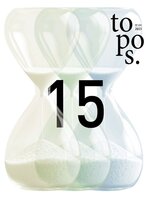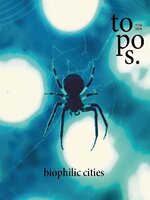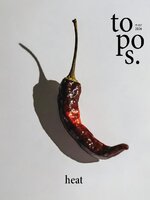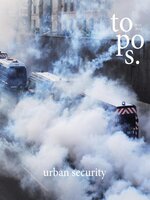Topos is a must-have for successful landscape architects, planners, urban designers and architects all over the world.The monothematic issues provide a global overview of innovative projects, new developments and trends in the profession. Be part of the worldwide community of Topos readers!
THE INTERNATIONAL REVIEW OF LANDSCAPE ARCHITECTURE AND URBAN DESIGN
Editior Letter
WOULD YOU STOP KEEPING BEES, PLEASE? • Keeping honey bees is considered green and environmentally friendly. Companies all over the world are buying bee colonies to give themselves a sustainable image. Beekeeping has experienced a boom in recent years, but very few people know what they are really doing.
A Hotel That Nobody Wants to Stay in
Barcelona • Barcelona has taken the Covid lockdowns as inspiration for implementing its green city strategies. Now, rewilding is a priority and the move towards car-free, green streets benefits both the environment and the city’s population. Given the dense form of the city, green rooftops are a key part of the biophilic city strategy of Barcelona.
Sandra the orangutan
Future Cities Are Biophilic Cities • Biophilic cities are cities that deeply care about nature. This is how Timothy Beatley, who helped to found the Biophilic Cities Network in 2013, explains it. But not only that – in biophilic cities, connections to nature also play a role in city planning and design. Timothy Beatley explains why nature is so important in an urban context, what cities around the world are already doing and what challenges still remain.
THE BIOPHILIC NETWORK
CODIFIED INTO LAW
THE POCKET GREEN CITY AND ITS RECIPE FOR SUCCESS • In her role at Public Works in San Francisco, Jennifer Cooper creates parks, playgrounds and other urban spaces that make life in the city more pleasant and green. In this interview, she reveals how San Francisco is preparing for its biophilic future.
THE FLUFFY FUNGUS • When we think of mushrooms, we usually think of their fruiting bodies. The picture shows the so-called lamellae with which a fungus spreads its spores. However, the less visible parts of a fungus can be much larger than it first appears. Fungi prove to be essential not only as decomposers, but also support the growth of plants in a symbiosis known as mycorrhiza. Fungal spores are omnipresent in the air and if they find a suitable substrate, mold develops - usually, but not always, undesirable. Mold can make food inedible or give it an excellent taste, as many types of cheese prove.
SINGAPORE’S GREEN RISE
THE SPOOKY SPIDER • Although often confused with them, spiders are not insects but belong to the class of arachnids. Only a few of the more than 100,000 known spider species feel at home in the city. Despite their small size, spiders trigger panic attacks in many people. Wrongly so, because most species are completely harmless. What’s more: without spiders, we would have to deal with fly and mosquito infestations, among other things. The jumping spider pictured here does not catch its prey with a web, but overpowers it by jumping on it. To do so, it has excellent eyesight and body control.
ECOLOGY, WELLNESS, AND CELEBRATION
A RIBBON OF GREEN • In her role as Director of Urban Growth and Open Space in the Canadian city of Edmonton, Howeida Hassan is in charge of one of the largest park systems in the world. In this interview, she gives an insight into the biophilic present and future of the city.
THE GREEN GIANTS
HARBOR AND HAVEN
THE MURDEROUS MOSQUITO • Despite their small size, mosquitoes are probably among the most dangerous animals in the city - an estimated half a million to one million people die every year due to the transmission of diseases by mosquitoes. Recently, species such as the Asian tiger mosquito have made a name for themselves...

 N. 132
N. 132
 N. 131
N. 131
 N. 130
N. 130
 N. 129
N. 129
 N. 128
N. 128
 N. 127
N. 127
 N. 126
N. 126
 N. 125
N. 125
 N. 124
N. 124
 N. 123
N. 123
 N. 122
N. 122
 N. 121
N. 121